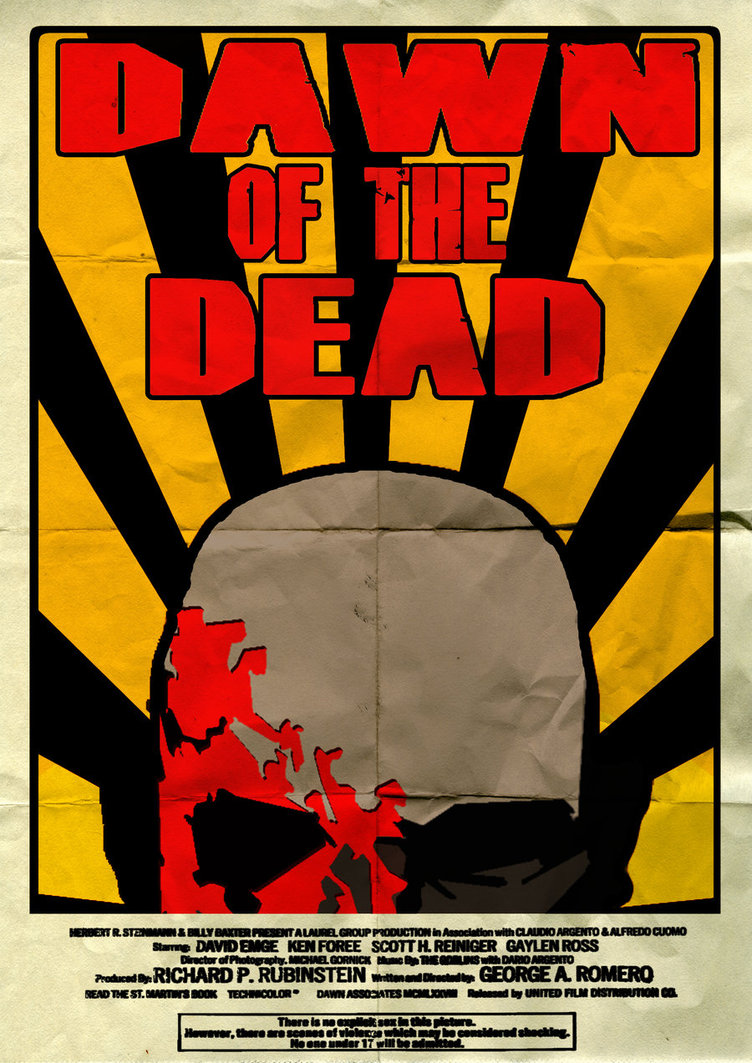
‘Dawn of the dead’ may lack the pulverising immediacy of ‘Night of the Living Dead’, but it gains in exhilirating, epic scope. It is one of the best films of the 1970s, a reckless, hubristic, over-ambitious masterpiece whose excess is reined in by its Langian formal precision. The claustrophobia of the first film is replaced by a wider frame of reference, including the media, the military and suburbia; although, typically, the move is once again towards the indoors.
The film starts explosively, inside a panicking TV station trying to report on the inexplicable emergence from the earth of the undead. An assorted quartet – two media, two army; three white, one black; three men, one woman escape in a helicopter used for rush-hour traffic reports. There is a sense of relief in this, a sense of breaking free from the circle of undead enclosing America’s major cities.
But not for long – it seems that modern American man, unlike his pioneering ancestors, cannot stand open spaces, and holes up in a building, a shopping
mall, which is crawling with zombies, and recognised by the woman as a prison. Not content with this level of confinement, our heroes draw plans, erect barriers, shut down grids. Romero pinpoints this national insularity by framing his modern horror movie as a transposed Western, with the foursome as latterday frontiersmen wiping out the natives, and erecting a new civilisation.
Some might say that Romero’s irony is a little heavy here – the mock-triumphal Western music on the soundtrack; the composition of the four at the height of the crisis standing in front of a sign with just the letters ‘U’ and ‘S’ visible; the glee in the gun culture, including an ersatz Western gun store in the mall the ‘Red River’ like beseiging of the mall by the ‘Indian’ Hells’ Angels on their motorbike/horses complete with tomahawks. But such irony is never stable – Romero keeps pulling the ground from under the viewers’ feet, both in terms of character identification, and the shifting meanings embodied by the zombies.
Romero’s terrifying vision is of an America turned in on itself, eating itself through cannibalistic greed, the very system of capitalism based on a cycle of power and repression in which the repressed will never quite go away. ‘Night’ pulsated with a late 1960s urgency reflecting contemporary social and political upheaval, white capitalist America beseiged by the peoples it had oppressed for centuries. By 1978, that political anger is gone, and America has reverted to being a race of consumer zombies, congregating around massive shopping malls like they’re the religious temples of the Incas, trapped there not by the freedom of choice of capitalist propaganda, but mindless instinct.
the zombies are supposed to be the enemy, the Other in conventional horror terms, but the first thing the so-called heroes do on landing at the mall is substitute urgent survival for gleeful consumerism (compare with the very similar silent fantasy, ‘Paris Qui Dort’). There’s no way to deal with any outside threat because we are numbed and bloated by products. Reality ceases to exist; there are some beautifully surreal scenes, as our heroes make homes in showrooms.
The mall sequence as a whole has a Bunuellian savagery about it, and the film builds up an aggression like the characters until all is chaos – tones, modes, genres all colliding, the ‘reality’ or ‘integrity’ or, even, ‘seriousness’ of the film as much in question as the modern world the protagonists live in, where even time seems to stand still, the weeks of the action compressed into the framework of a day, with the night of the living dead giving onto the dawn. It is probably allegorically significant which characters survive, but by the end we’re not sure whether we’re watching a horror, a comedy, a thriller, a Western, or a very bitter joke. Certainly scarier than ‘The Stepford Wives’
